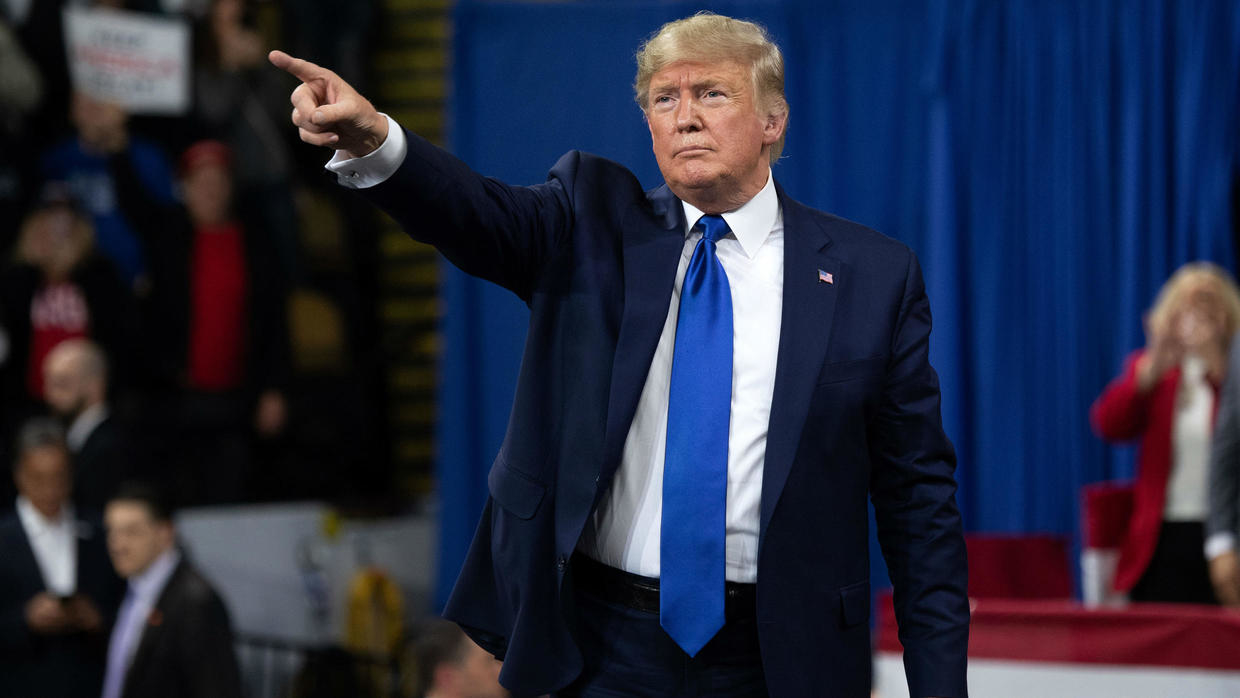Trump Vows to Revamp Economy in 2024 Run
21.07.2024 12:00 1 min. read Alexander Stefanov Source: https://www.barrons.com/articles/trump-election-economy-markets-inflation-debt-deficit-8a5c19b5?mod=hp_HERO
Source: https://www.barrons.com/articles/trump-election-economy-markets-inflation-debt-deficit-8a5c19b5?mod=hp_HERO
In Milwaukee, former President Donald Trump accepted the Republican presidential nomination after a high-energy four-day event.
Trump’s acceptance speech, spanning 92 minutes, was a blend of unifying rhetoric and pointed criticisms of his adversaries, portraying a nation in decline under current leadership.
Trump’s vision for a second term promises even more dramatic shifts than his first. He highlighted his capability to resolve global issues swiftly and outlined an aggressive economic agenda. His new approach could mark a stark departure from his previous policies, aiming to overhaul U.S. economic strategies.
If victorious in November, Trump could lead with a Republican Congress and a strengthened Supreme Court. His vice-presidential pick, Senator JD Vance, reflects his influence over the GOP, despite Vance’s previous criticisms of Trump.
Current economic conditions might play in Trump’s favor, with potential Federal Reserve rate cuts boosting economic activity and stock markets. However, the increase in government debt from new tax cuts could strain the bond market, pushing up long-term interest rates.
Trump’s consolidation of Republican support and the shifting economic landscape contribute to growing forecasts of a GOP sweep in the upcoming election, with analysts predicting a likely unified Republican government.
-
1
Trump Targets Powell as Fed Holds Rates: Who Could Replace Him?
27.06.2025 9:00 2 min. read -
2
U.S. PCE Inflation Rises for First Time Since February, Fed Rate Cut Likely Delayed
27.06.2025 18:00 1 min. read -
3
Key U.S. Economic Events to Watch Next Week
06.07.2025 19:00 2 min. read -
4
Gold Beats U.S. Stock Market Over 25 Years, Even With Dividends Included
13.07.2025 15:00 1 min. read -
5
U.S. Announces Sweeping New Tariffs on 30+ Countries
12.07.2025 16:30 2 min. read
US Inflation Heats Up in June, Fueling Uncertainty Around Fed Cuts
U.S. inflation accelerated in June, dealing a potential setback to expectations of imminent Federal Reserve rate cuts.
Gold Beats U.S. Stock Market Over 25 Years, Even With Dividends Included
In a surprising long-term performance shift, gold has officially outpaced the U.S. stock market over the past 25 years—dividends included.
U.S. Announces Sweeping New Tariffs on 30+ Countries
The United States has rolled out a broad set of new import tariffs this week, targeting over 30 countries and economic blocs in a sharp escalation of its trade protection measures, according to list from WatcherGuru.
Key U.S. Economic Events to Watch Next Week
After a week of record-setting gains in U.S. markets, investors are shifting focus to a quieter yet crucial stretch of macroeconomic developments.
-
1
Trump Targets Powell as Fed Holds Rates: Who Could Replace Him?
27.06.2025 9:00 2 min. read -
2
U.S. PCE Inflation Rises for First Time Since February, Fed Rate Cut Likely Delayed
27.06.2025 18:00 1 min. read -
3
Key U.S. Economic Events to Watch Next Week
06.07.2025 19:00 2 min. read -
4
Gold Beats U.S. Stock Market Over 25 Years, Even With Dividends Included
13.07.2025 15:00 1 min. read -
5
U.S. Announces Sweeping New Tariffs on 30+ Countries
12.07.2025 16:30 2 min. read


